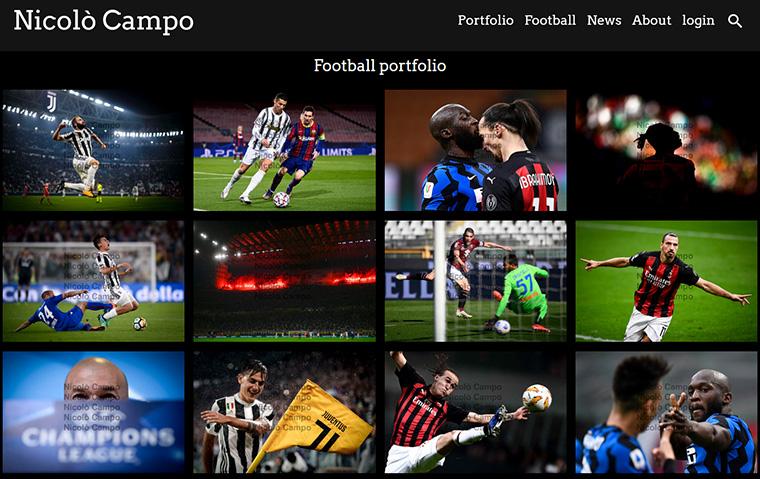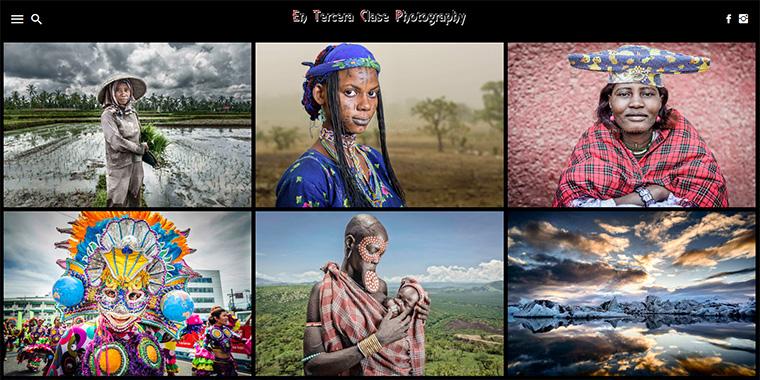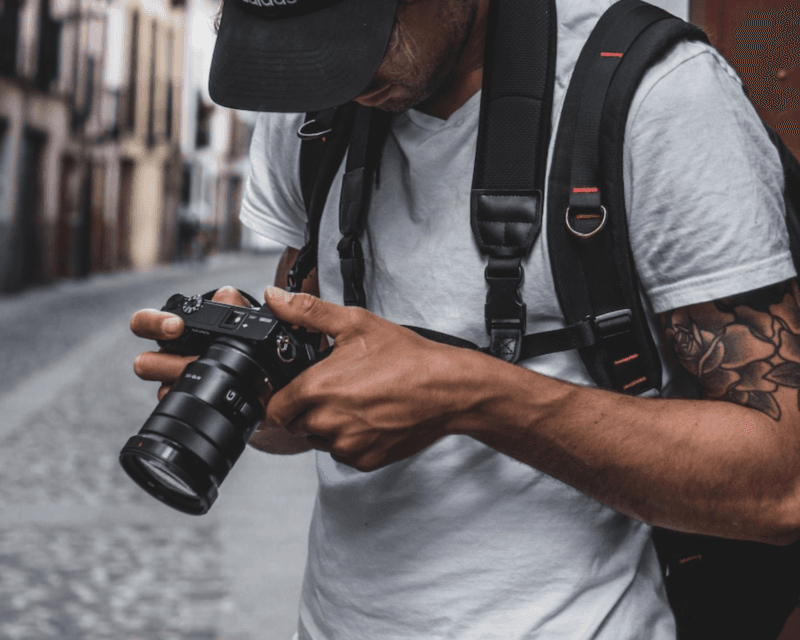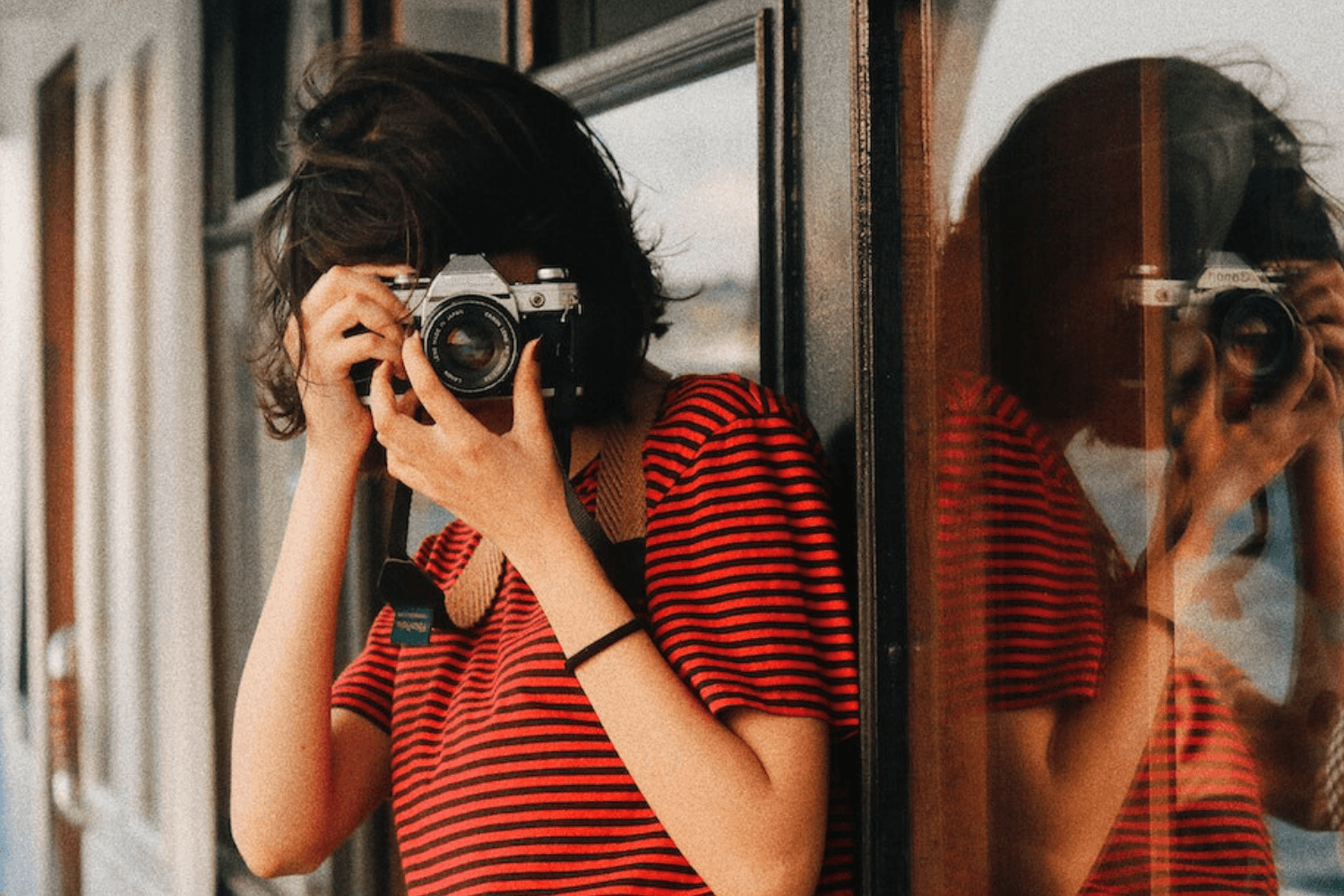Create a Knockout Photographic Portfolio with These 5 Expert Tips
Peter Charlesworth
Thu Nov 10 2022

By Peter Charlesworth
What is a photographic portfolio?
A little history about photographic portfolios. In ancient times, OK a couple of decades ago – before the advent of digital photography and the deluge of imagery online – photography portfolios were physical entities. They were either books with plastic sheathed images, boxes of prints, or zipped cases which photographers schlepped around photo-editors’ offices hoping to show off their talents.
Getting an appointment to see a photo editor of a magazine or newspaper, or the creative director of an advertising firm, was never easy. If you did catch a break and get a ten- or fifteen-minute slot in their busy schedule, you had to wow them.
More often than not, photographers trying to get an appointment would hear the dreaded words: “portfolio drop-off day is Tuesday, collection Friday.” This meant that there would be no facetime with the editor. So, for many photographers, their portfolios, or ‘books’ really had to do the talking.
 Nicolò Campo is an Italian sports photographer and photo journalist who specialises in soccer.
Nicolò Campo is an Italian sports photographer and photo journalist who specialises in soccer.
Photographic portfolios in the digital age
That has not changed. In fact, it is probably harder now to get an appointment than it was in the analogue days. Unless you are a superstar photographer (or happen to be friends with the editor or art director) then I can pretty much guarantee that you will not get a face-to-face meeting to show a physical folio. Even if you get through to them on the phone and try to set up an appointment, the answer will undoubtedly be, ‘send me an email with a link to your website’ – the modern day, ultimate ‘portfolio drop-off’.
So it is crucial that if you do get to send a link to your portfolio website, you wow them from the get-go with a stunning home page gallery. Photo editors probably won’t have a lot of time to navigate through a website but if they see something stunning to start with, they are more likely to click around and view some of your other galleries. The 10- or 15-minute time slot of yesteryear is now probably reduced to a couple of minutes online attention span.
If you were in a one-to-one meeting in the editor’s office at least they had to be polite and talk to you while they looked through your work. Now, when you send a link to your website, you have no idea if they are flicking through your site or galleries while talking to somebody on the phone, sitting in a meeting, or otherwise multi-tasking. So, if you manage to get them to view your site, ensure that all of your galleries are short, sharp, sweet, and stunning as per the following recommendations.
How to create a knockout photographic portfolio website
Your home page gallery should be the best of the best – but all of your galleries should follow these pointers:
 Spanish photographer, Jorge Fernandez has travelled to over 90 countries documenting everyday life of the people and their customs and cultural traditions.
Spanish photographer, Jorge Fernandez has travelled to over 90 countries documenting everyday life of the people and their customs and cultural traditions.
1. Less is more – absolutely the most important rule!
I have appraised an untold number of portfolios and websites. I can’t tell you how many times I have been confronted with galleries filled with hundreds of photos that made rejection almost a certainly, for no other reason than the boredom factor. My advice, never fill a gallery with more than 50 photos. In fact, the ideal number would be between 30 and 40 images. If you are any good, an editor/creative director is going to know that right away (adding another 50 photos to your gallery is only going to dilute it).
2. Every single image must stand out
Never have any similar images in your galleries. It makes no sense to dilute your ‘wow factor’ by adding more than one image of the same scene.
Many times I see folios with similar images, especially in subjects such as sports. The editor couldn’t care less that you have 3 shots of the striker heading a spectacular goal. Edit, edit and edit a bit more. Every single shot in your gallery should stand out on its own merit. It would be better to have 20 unique photos than to fill space with similar images, or second-rate shots, just to have more images (remember, less is more).
3. Your main (homepage) gallery should not be single event
One mistake I see photographers make is showing a single event on their homepage gallery. For example, I have seen a homepage gallery from a news photographer which had almost 100 photos of the same demonstration. Endless pictures of protesters with banners, then demonstrators marching, followed by a bit of confrontation with the police, some arrests…sigh. The first 5 photos told me he could shoot a demonstration, but what else could he do?
Another website I reviewed had over 200 photos of a single rhythmic gymnastics’ competition on the home page. By the time I had looked at 10, I had given up. The photographer had not wowed me with her talent by including the shots of every competitor and all the medals being handed out. On the contrary, it diluted her work because she hadn’t edited her gallery at all.
 Award winning, Swedish photo-journalist Jonas Gratzer has covered hard hitting social and environmental stories from all over Asia.
Award winning, Swedish photo-journalist Jonas Gratzer has covered hard hitting social and environmental stories from all over Asia.
4. Order your galleries
Almost certainly, the editor viewing your work is going to view it on a big screen, more than likely as slideshows of your galleries. It might not seem important but getting the order of your photos right is important, especially if you are sending a link to a slideshow of one of your galleries – or if you have selected a slideshow format for your home page and/or galleries (features available on LightRocket websites). If your image order keeps flipping between horizontal and vertical images, it can be very jarring to the viewer. Consider showing a half dozen horizontals, then maybe moving to 5 or 6 verticals and so forth. This is much easier on the eye.
Also, unless you are intentionally trying to shock for an effect, be careful about juxtaposition when ordering your images. Moving from a gory photo from a war zone to a soft-focus nude composition might be just a bit too incongruous. Spend some time and thought making sure the order of your folio flows.
5. Think of all of your galleries as individual portfolios
You might only shoot architectural photos, but it would probably pay to create galleries that are all mini folios. A general folio showing a bit of everything you do might go on the homepage. But you would be wise to create a gallery with just stunning exterior shots of buildings and another for the interior details. That way you can hone what you send. You can point the marketing director of the company actually building the project to your exteriors gallery and the interior designer to the best of your inside pictures.
If you specialise in hotels, again, having a variety of folio galleries to show can help you get the job. If the public relations director wants somebody to shoot the new swimming pool and gardens, they probably don’t want to see a gallery of food shots.
Another example for an editorial news photographer; if you’re submitting a website to a business magazine photo editor, your best bet is to direct them to your ‘best portrait and factory photos’ gallery. They won’t really want to know that you can also shoot weddings, street photography and travel photos – if they get interested, they can always have a look around your site if they want.
Final thoughts on creating a knockout photographic portfolio website
In conclusion, the good news is that it is now a lot easier (and cheaper) to create a fantastic portfolio website ready to show online. The bad news is that it is now even less likely that you will get a face to face. So always remember that less is more. And if you make sure every image in every gallery stands out in its own right – you are more than likely to have a knockout website that can wow an editor.
Written by Peter Charlesworth | Peter, Co-founder of LightRocket, has worked as a professional photographer for over 35 years. Currently he works for corporate clients and business magazines specialising in portraits.
Cover image by Cottonbro
To read more helpful articles on photography, check out our blog page.
Join our growing photographer community at LightRocket and get powerful archive management and website building tools for free!


